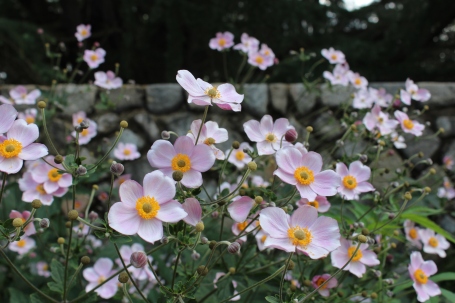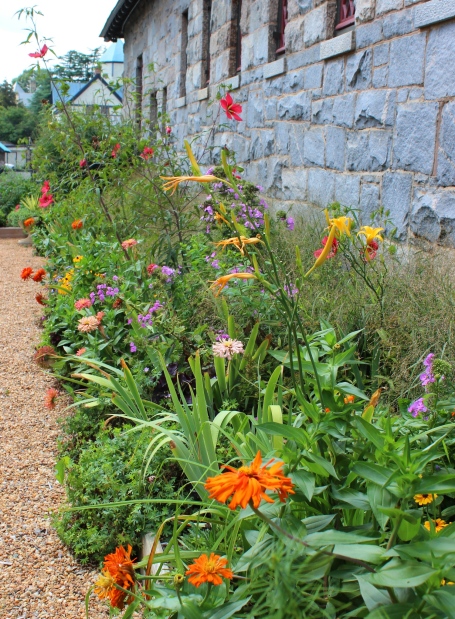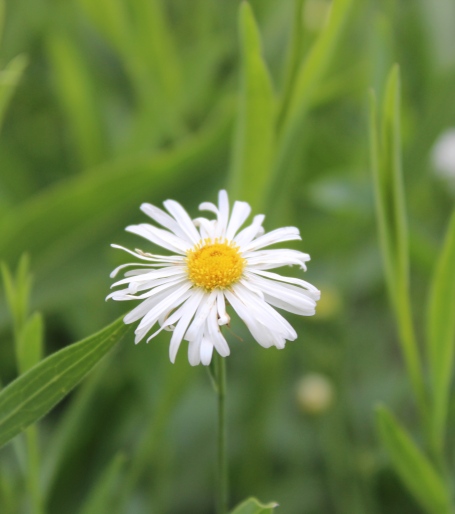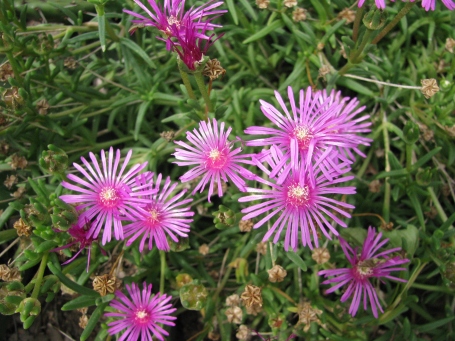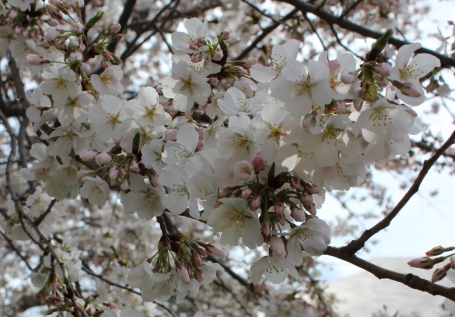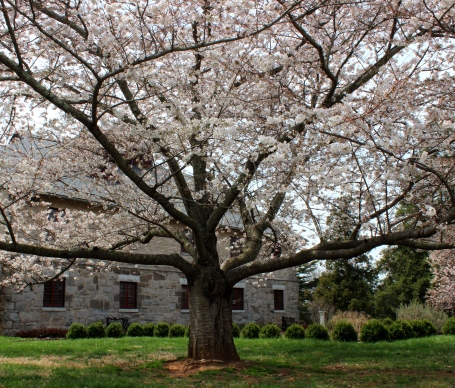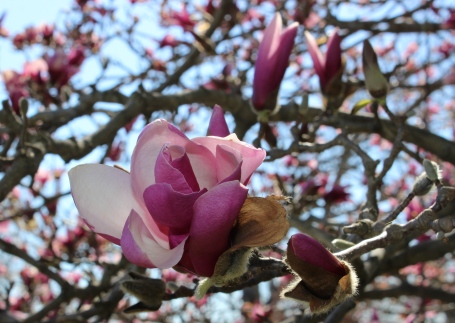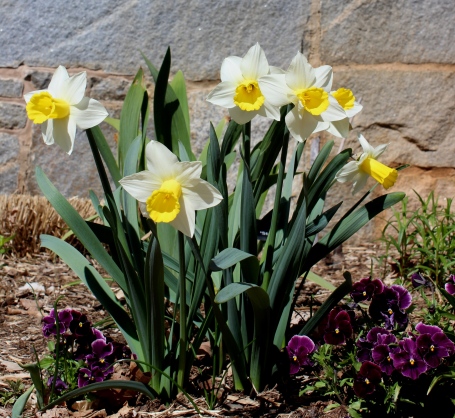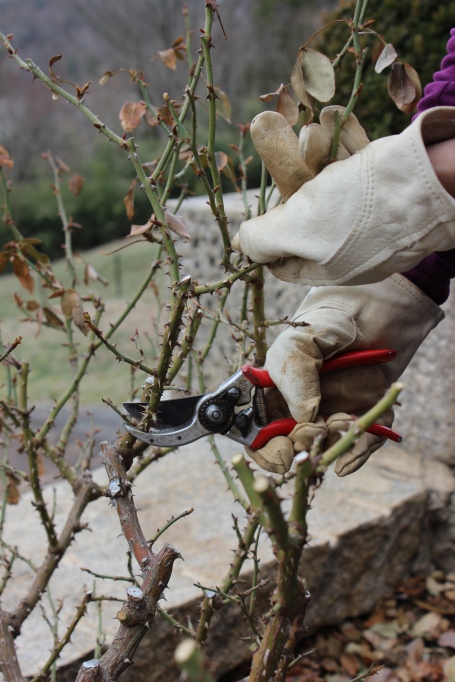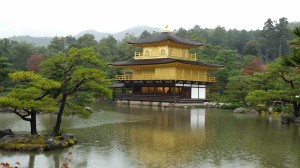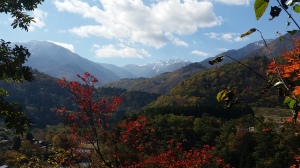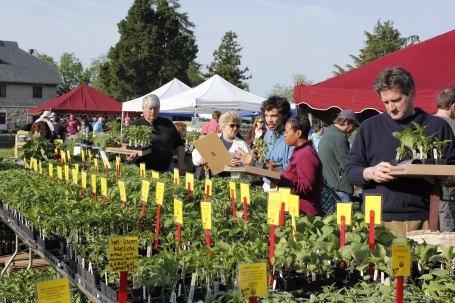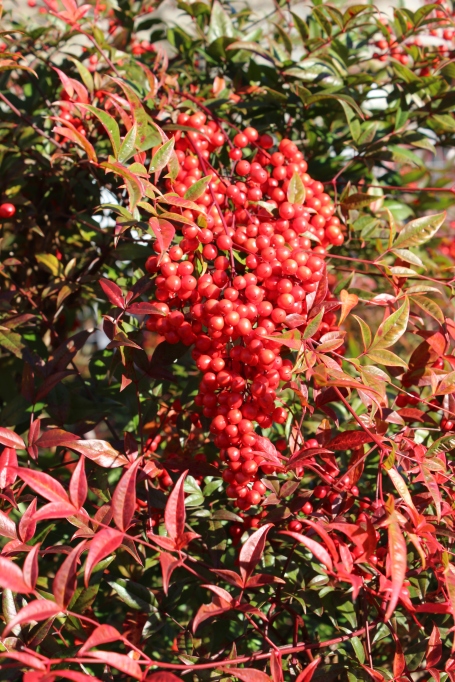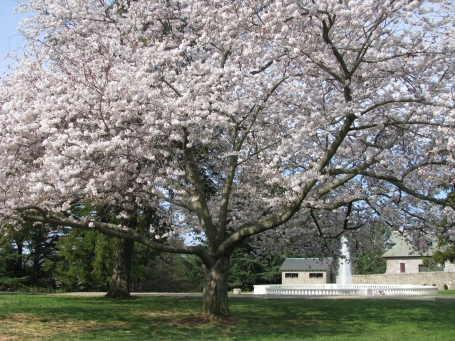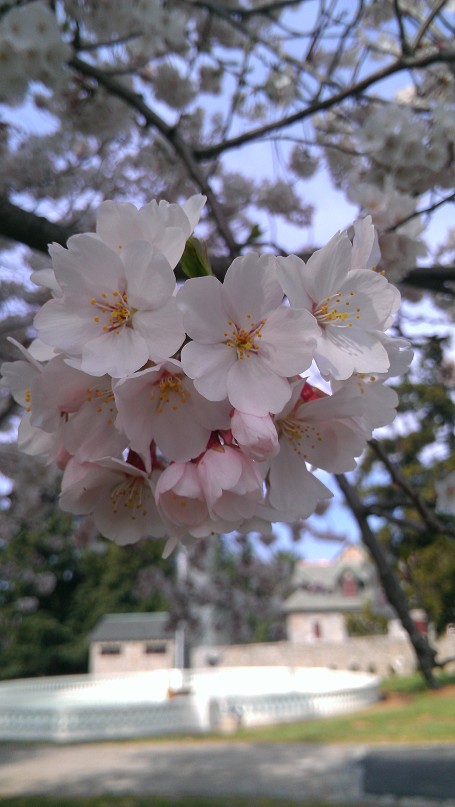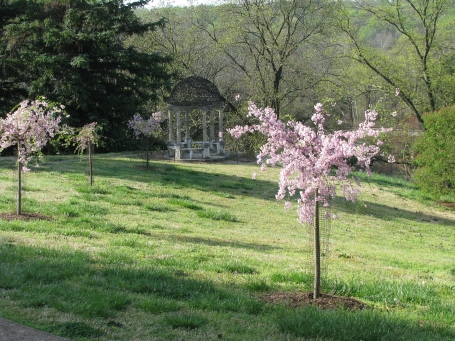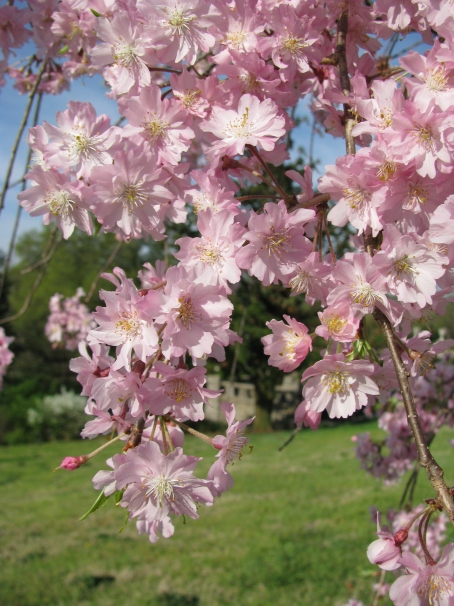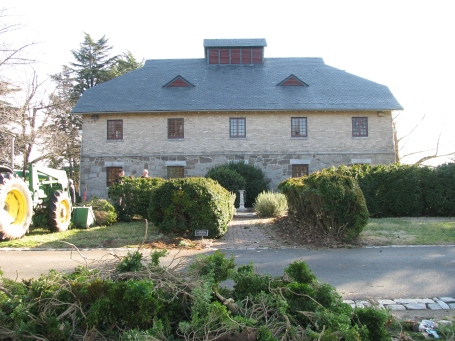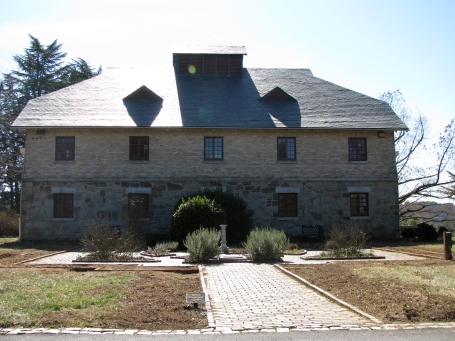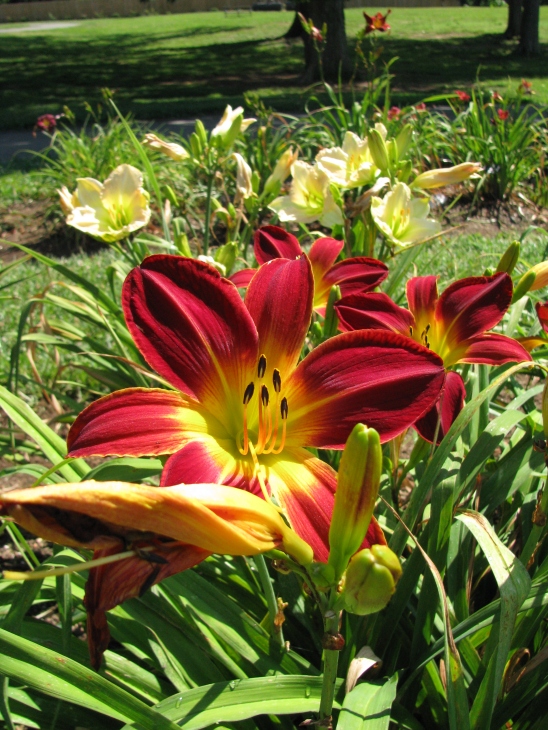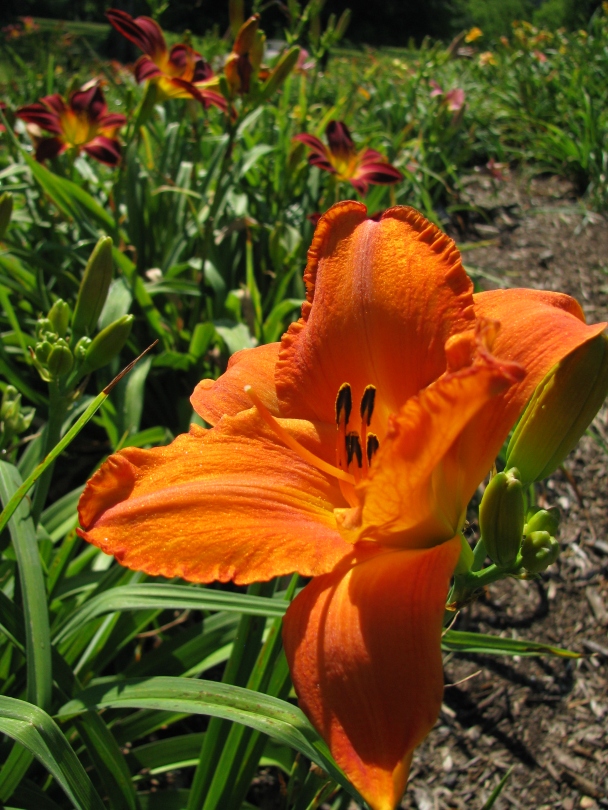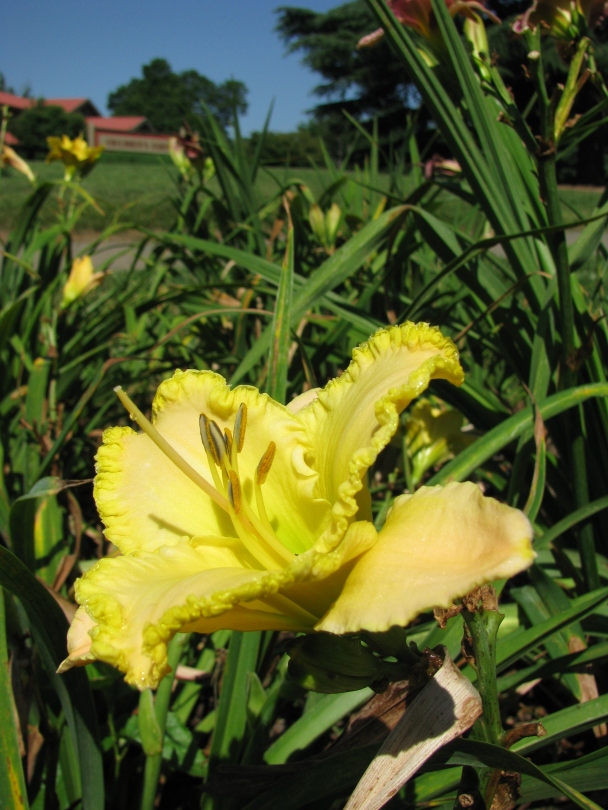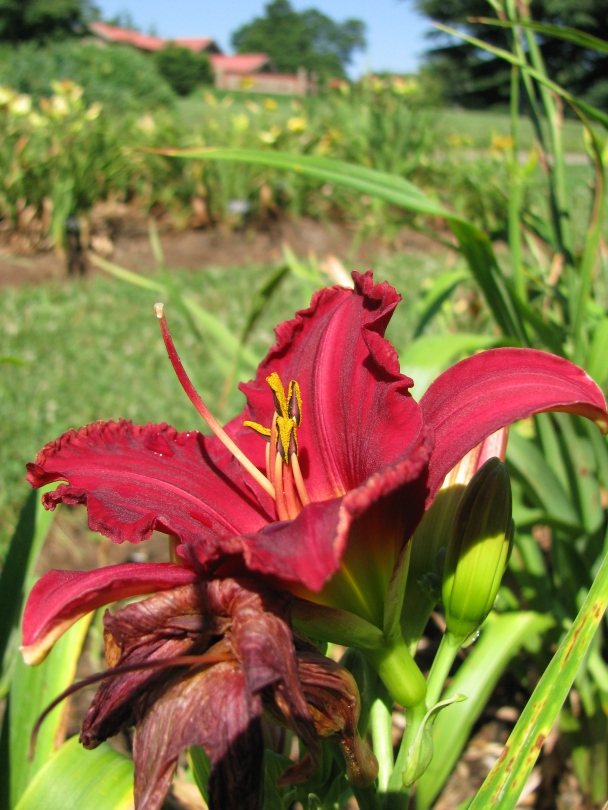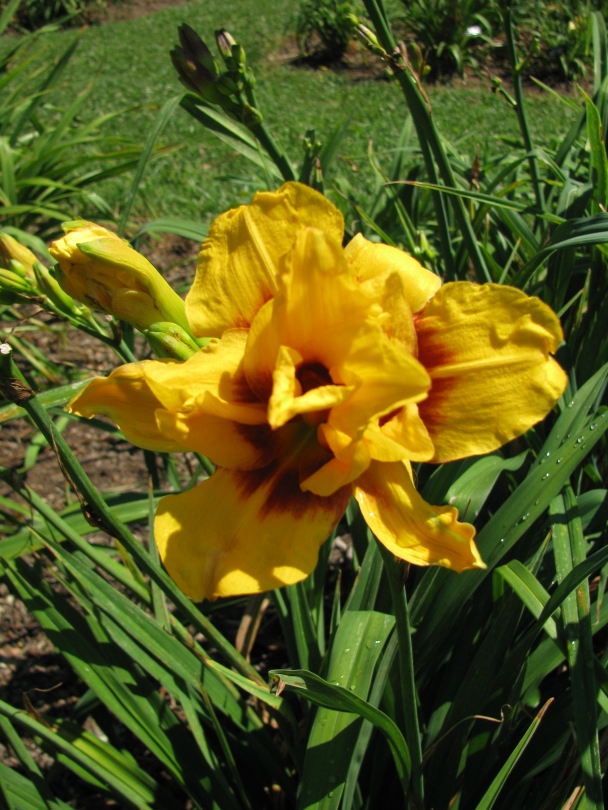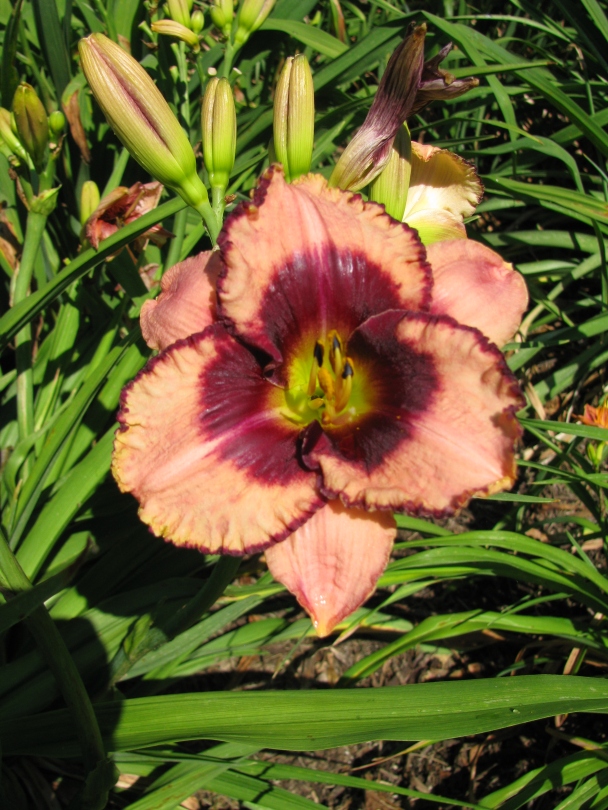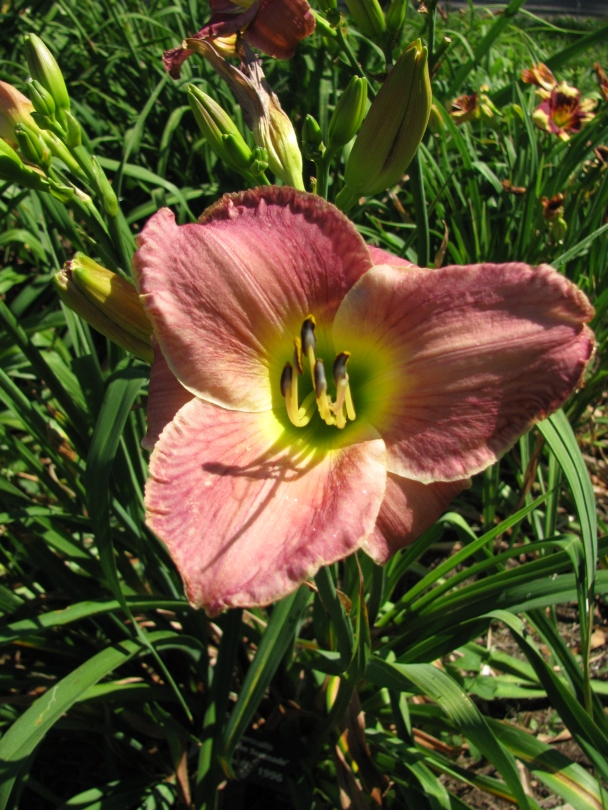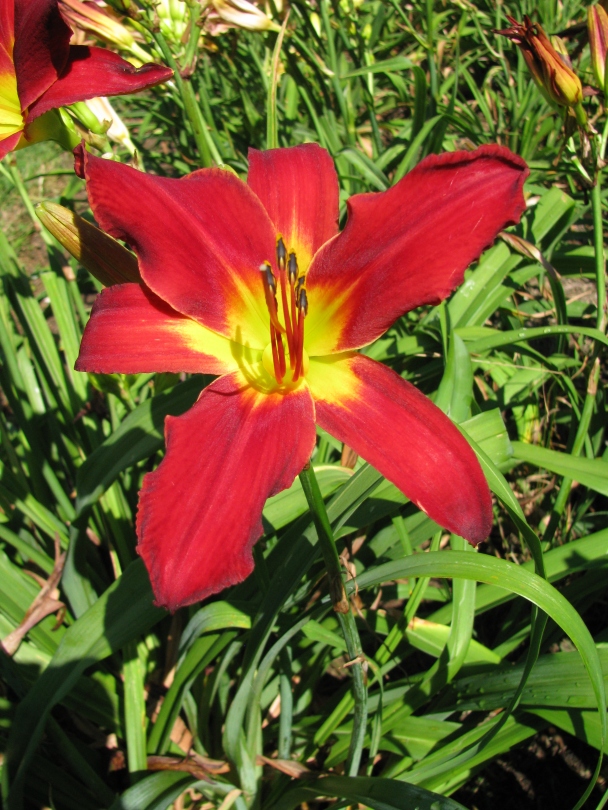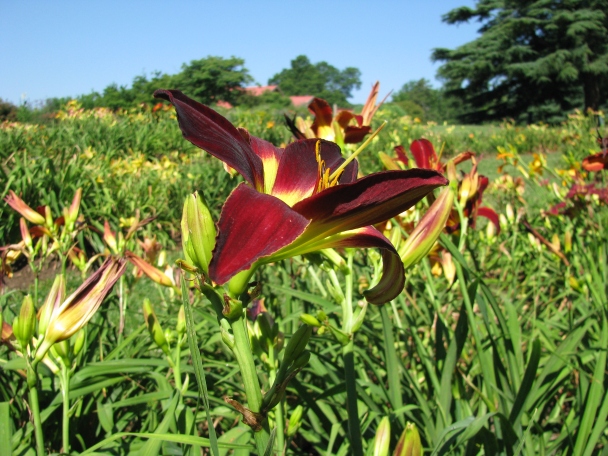Author Archive
Late Summer Show of Color
It may be August – the month that brings thoughts of intense heat and humidity for many – but at Maymont, the late summer garden is still full of color and charm. Look for late summer annuals including Japanese Anemones, Anemone japonica, and Asters like Syphyotrichum novae-angliae ‘Purple Dome,’ both found in the Carriage House Garden.
Other beauties include Boltonia asteroids, which opens its small daisy-like flowers to soften any border, and Helenium autumnale, unfortunately named Sneezeweed, that blooms alongside other pollinator plants in Marie’s Butterfly Trail. You also can find daylilies like Hemerocallis ‘Autumn Minaret’ with its small flowers on tall flowerscapes, laughing at the 90 degree days. We grew this cultivar at Maymont for years, and I highly recommend it.
The late summer garden isn’t fading here. In fact, it is a rainbow of color, so choose a cool morning or late afternoon to enjoy nature’s vibrant show at Maymont.
Maymont is Clothed in Blossoms for Spring
Spring is here, and Maymont is clothed in blossoms. The Yoshino cherry trees that welcome guests near the Hampton Street Gate are in bloom complimenting hundreds of flowering plants from magnolias to daffodils.
Maymont’s Japanese Garden is beautiful as plants emerge from winter dormancy. Buds are breaking on the Japanese maples, and Iris are growing with clean green new leaves. The koi fish are active and children enjoy pointing out the large colored fish as they travel the stepping stones.
The horticulture staff has been busy replacing tired azaleas on the island with Nandina ‘Pink Blush’ and Distylium ‘Vintage Jade’. Three mature Japanese maples were moved into the garden, and each tree was carefully placed to complement its growth habit.
I encourage you to come watch spring unfold in Maymont’s gardens. It is a sight to behold! While here take a tour of Maymont Mansion and enjoy the Haviland china in the exhibit “A Passion for Nature.” I personally took the tour and enjoyed seeing the Dooley’s own passion for nature through their collection of decorative arts.
I look forward to seeing you soon!
Peggy
Take Time to Prune the Roses
The winter weather has made this year’s rose pruning at Maymont quite challenging, but with the warmer temperatures this week, we finally have started the process. Here are a few tips to consider before you prune your own roses.
Before grabbing the clippers and heading to the garden, first take the time to clean your pruners and sharpen them. Sharp pruners make clean pruning cuts, and clean clippers prevent the spread of disease. At Maymont, we disinfect our clippers with 91% isopropyl rubbing alcohol between each bush.
Another important step before starting to prune is to identify your rose bush as a climber, a hybrid tea, a floribunda or a bush rose. Is it an old garden rose or a modern rose (a cultivar introduced after 1860)?
Different groups of roses are pruned differently. Old garden roses are pruned after they bloom. For climbing roses, just remove the deadwood along with any canes that are rubbing one another. Bush roses, representing the polyantha roses, knock-out roses and drift roses, are pruned by removing two thirds of the plant at this time of year. The hybrid tea and floribunda roses are pruned to one third the size to a bud facing away from the center of the bush; this will open the plants in the center to allow better air circulation.
The purposes of pruning a rose bush are 1) to eliminate dead and diseased rose canes and 2) to increase flowering. Roses flower on new growth with the exception of the climbers. As mentioned above, climbing roses are pruned differently since they bloom on canes more than one year old.
Now, start pruning your bush roses, and a bounty of beautiful rosebuds will be here before you know it!
Peggy’s Big Adventure in Japan
Maymont Director of Horticulture, Peggy Singlemann, is in Japan right now enjoying a tour of the country’s gardens, and she has been sharing some photos of her trip along the way. Some of the images look like they could have been taken in the Japanese Garden here at Maymont! Did you know: Gardens in Kyoto were used as inspiration when landscape architect, Barry Starke, renovated and expanded Maymont’s garden in 1978.
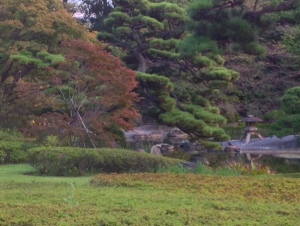
Peggy said, “This is the Imperial Garden in Tokyo, one of the many gardens we have seen. The garden was exquisite. As you can see there is a design element in this photo that should look familiar.”
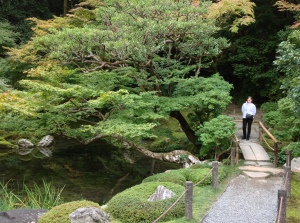
Peggy said, “This garden is centuries old and filled with moss and plants that defy the ages. Notice the Japanese maple, growing along the edge of pond. This tree is growing horizontally just a few feet above the surface of the water. The visit to this garden was peaceful because I was the only person walking through the garden for quite some time.”
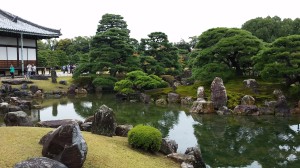
Peggy said, “This is the garden at Nijo Castle, home of the shoguns, in Kyoto. In the 1800’s at the end of the era of shoguns this became the Imperial Palace in Kyoto.”
Irises in October?
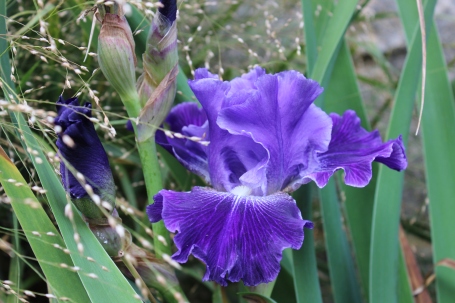 Bearded Iris (Iris germanica), native to central and southern Europe, have been growing in gardens for centuries, and they are among the most popular and recognizable flowers of spring. But did you know that some irises bloom in the fall too? Since 1884, there have been starts and stops in introducing Iris species with a fall re-blooming tendency. Over the years, Iris have been crossed with one another to capture flower form, longevity of bloom, stem height, bud count and color variations. As a result, breeders realized that those with a remontant tendency (blooming more than once in a season) have genetic connections with Iris cengialtii and Iris aphylla in their ancestry as well as a few other species. A local Iris breeder, Mike Lockatell has teamed with Tom Silvers, a diploid Iris breeding specialist from Maryland, to research the re-blooming tendency which, once identified, will help guide future Iris breeders. Lockatell has established Iris test beds in Maymont’s flowering border at the Carriage House, at a private garden in Midlothian, and at J. Sargeant Reynolds Community College in Goochland. All involved are discovering the beauty of bearded iris in the fall and reporting their successes and failures. For Iris lovers, this means you can now enjoy some of your favorite flowers in the spring and then again in the fall!
Bearded Iris (Iris germanica), native to central and southern Europe, have been growing in gardens for centuries, and they are among the most popular and recognizable flowers of spring. But did you know that some irises bloom in the fall too? Since 1884, there have been starts and stops in introducing Iris species with a fall re-blooming tendency. Over the years, Iris have been crossed with one another to capture flower form, longevity of bloom, stem height, bud count and color variations. As a result, breeders realized that those with a remontant tendency (blooming more than once in a season) have genetic connections with Iris cengialtii and Iris aphylla in their ancestry as well as a few other species. A local Iris breeder, Mike Lockatell has teamed with Tom Silvers, a diploid Iris breeding specialist from Maryland, to research the re-blooming tendency which, once identified, will help guide future Iris breeders. Lockatell has established Iris test beds in Maymont’s flowering border at the Carriage House, at a private garden in Midlothian, and at J. Sargeant Reynolds Community College in Goochland. All involved are discovering the beauty of bearded iris in the fall and reporting their successes and failures. For Iris lovers, this means you can now enjoy some of your favorite flowers in the spring and then again in the fall!
Gardening for Health, or Believing in the Seed Fairy
It’s spring gardening season, and there’s no better place to start your plant shopping than Maymont’s Herbs Galore & More festival, coming this Saturday, April 26 from 8am to 4pm. You’ll find more than 50 vendors selling herbs and other plants as well as garden accessories, herbal cosmetics, delicious food and much more, and you can gather great gardening tips during Meet the Experts sessions and at the new Interactive Herb Station, presented by Whole Foods Market. As our guest blogger reminds us below, gardening is an inspirational source for both our physical and mental well-being. Dig in!
Guest Post By Leslie Vandever
“There can be no other occupation like gardening in which, if you were to creep up behind someone at their work, you would find them smiling.” -Mirabel Osler
As the Endless Winter of 2014 finally slouches toward the exits, gardeners everywhere are peeking out from beneath their layers of blankets, feeling the fresh, gentle tug of springtime. Seed catalogs appear in the mail, crocuses crown, daffodils pop up here and there, and colorful seed packet displays burst forth in the local supermarket.
It’s an itchy, tickly creature, the spring gardening bug. But there are few activities as simple, healthy and satisfying. Whether you start your seeds indoors or plant small, sturdy starts from the nursery, launching the year’s garden is hope and joy combined.
“In every gardener there is a child who believes in The Seed Fairy.” –Robert Brault
Even for the most serious and stoical person, gardening taps directly into Wonder. Will these seeds grow? How big will the plant get? Will I really have fresh tomatoes? What will I do with all that zucchini? Please can I have a gorgeous bunch of flowers to make me smile? In the beginning, gardening is all about anticipation, too.
What’s that you say? You live in an apartment, surrounded by other buildings and parking lots? Plant your garden in pots. Line them up along sunny windowsills, or on your patio or balcony. Don’t have any of those? Volunteer at an urban community garden. Or try soul-gardening: get yourself to a park, a nursery, or a horticultural center (or all three) as often as you can. Stroll about, immersing yourself in the green, the plant-y smell of moist, dark soil, and the sheer beauty of the flowers, shrubs and trees. Gardens lift the spirit, lighten the mood, and refresh the soul. Soak it up. Store it for later contemplation.
“Gardening is cheaper than therapy and you get tomatoes.” -Author Unknown
The reasons for gardening—or even visiting gardens—are many. Gardening gives you something to do with your leisure time as the days grow longer. Being outdoors in the sun and fresh air, digging in the soil, discovering earthworms, arranging rows, deciding what goes where, even learning how to do it all is therapeutic and good for mental health.
And it’s not bad for physical health, either. Gardening requires movement. It pulls you out of your customary sitting position (at work, or in front of the TV) and provides a reason for muscles. When you’re squatting or kneeling while you plant or weed, your perspective on the world is all new. You discover again why you have knees. You get actual dirt under your fingernails.
There’s this, too: according to the Harvard Medical School, 30 minutes of gardening can torch as much as 200 calories! Be gone, sinful breakfast donut!
Playing in the garden means walking, lifting, and digging a hole anywhere from the size of your fist to one the size of and depth of an upholstered armchair (for planting young trees, of course). Weeding requires lots of ups and downs: up while you drink a cooling lemonade in the sun, then back down to tackle that shifty, invading Bermuda grass. Then there’s the mowing and raking, the edging, the pruning and trimming. The sniffing, then snipping the blossoms for the kitchen table. Phew! It’s work, but oh, it’s good.
Finally, when you create a garden, you get to eat sun-warmed tomatoes right there, right off the very vine you planted, tended, watered, nurtured, and saved from tomato worms. Bite into that glorious red fruit just like you would an apple. Never mind the juice. Enjoy it! Then pick the other good things you grew: the green beans, the zucchini(s), the eggplants, the peppers, the peas, the lettuce. Be still and watch that jeweled red dragonfly perch on tip of a sunflower’s petal.
Know peace. Know joy.
Leslie Vandever—known as “Wren” to the readers of RheumaBlog, her personal blog about living well with rheumatoid arthritis—is a professional journalist and freelance writer with more than 25 years of experience. She lives in the foothills of Northern California.
References:
• Calories Burned In 30 Minutes by People of Three Different Weights. (2004, July) Harvard Medical School. Retrieved on March 28, 2014 from http://www.health.harvard.edu/newsweek/Calories-burned-in-30-minutes-of-leisure-and-routine-activities.htm.
• Goodman, Heidi. Backyard Gardening: Grow Your Own Food, Improve Your Health. (2012, June 29) Harvard Medical School. Retrieved on March 28, 2014 from http://www.health.harvard.edu/blog/backyard-gardening-grow-your-own-food-improve-your-health-201206294984
• Ness, Sheryl M. Gardening Restores Body and Soul. (2012, July 28) Mayo Clinic. Retrieved on March 28, 2014 from http://www.mayoclinic.org/diseases-conditions/cancer/expert-blog/cancer-and-gardening/bgp-20056406
5 Plants for Garden-Inspired Holiday Decorating
At Maymont, we are fortunate to have a landscape filled with fresh greenery to use in classes like our upcoming Wreath Workshops (Dec. 3-5) and Deck the Halls Workshops (Dec. 7). With a little planning and care, your garden can be a source as well. Consider planting the following plants for your own holiday décor.
1. Boxwood (Buxus ‘Green Beauty’)
With the concern over boxwood blight, we recently replaced the overgrown English boxwood surrounding the Herb Garden with the blight resistant Buxus ‘Green Beauty’. Full sun, mulch and organic or slow release fertilizer plus a 6.5 pH provide optimum growing conditions for most boxwood, especially ‘Green Beauty’.
2. Native Hollies (Ilex opaca, Ilex verticillata and Ilex decidua)
Virginia’s native hollies are a source of berries for the holidays. While not every gardener has room for the evergreen Ilex opaca, American holly, most gardeners do have room for the red berried stems of deciduous hollies, Ilex verticillata and Ilex decidua. Hollies grow best in full sun with well-drained acidic soil. These plants are diecious, meaning some plants have male flowers and some have female flowers, so a gardener must grow both cultivars for the beautiful berries to form.
3. Japanese Cedar (Cryptomeria japonica)
We have learned that Cryptomeria japonica, Japanese cedar, holds up very well in outdoor decorations and indoors in water. With a plethora of cultivars that grow to varying heights and widths, it is easy to place one in any landscape with full sun and acidic soil. The extra bonus is that they are deer-proof!
4. Eastern Red Cedar (Juniperus virginiana)
Our sun loving native Eastern red cedar, Juniperus virginiana, is a type of greenery we can’t do without during the holidays. Consider growing the cultivar ‘Emerald Sentinel’ as it is filled with the beautiful blue berries and has a conical shaped growth habit. Junipers are diecious, just like the hollies, and the berries appear on the female.
5. Nandina (Nandina domestica)
The Japanese native, Nandina domestica, is another source of holiday color. Sometimes called Heavenly Bamboo, this plant grows and berries in full sun with acidic soil. This easy-to-grow plant has one challenge: the berries do drop, so decorate with it in areas away from foot traffic both indoors and out!
Peggy M. Singlemann, Director of Horticulture
Cherry Blossoms
This week, the cherry blossoms have reached their peak. Maymont has three types of flowering cherries – weeping Higan, Yoshino and Okame. Yoshino cherry trees are intermingled with Kwanzan cherries along the Tidal Basin in Washington DC. White fountain cherry trees, seen around Richmond, VA, are also blooming now.
“Secret” Herb Garden Revealed
Did you know Maymont has an Herb Garden? If not, you’re not alone. The garden had become an unintentional secret at the estate, due in large part to the giant boxwood bushes hiding it from view. The boxwood surrounding the garden was removed last week, with support from Maymont’s Horticulture Advisory Committee. The goal of the project is to heighten awareness of the garden, making it easier for Maymont’s guests to discover and enjoy.
The original half-century-old English boxwood, Buxus sempervirens ‘Suffruticosa’, grew remarkably well, and despite our best pruning efforts, it became so large, it obscured the garden. The huge evergreen bushes also became a site for insects to overwinter, thus posing a seasonal challenge of insect infestations. The old plants will be replaced with a boxwood cultivar that will not grow as large. During removal, we discovered a course of brick around the perimeter of the garden that defined the boxwood border, so we will take the time to reveal this edging by re-grading the area. The soil in the boxwood bed will be amended with compost, and the pH will be adjusted to 6.8 for optimum boxwood growing conditions prior to the replanting.
Maymont’s Herb Garden was a gift from the Richmond Council of Garden Clubs in 1957. Designed by Kenneth Higgins, it has a traditional circular design with a border defined by boxwood. Today, it displays herbs for culinary, medicinal and potpourri uses. Herbs are organically grown so guests may touch, smell and taste. The garden is also the centerpiece of Maymont’s annual Herbs Galore & More festival and sale in April. It is located beside the original Stone Barn and is most convenient to the Hampton Street entrance.
The Herb Garden has been cared for by the Old Dominion Herb Society since 1978. They meet the first Saturday of the month, except in the summer. The group works in the garden prior to each meeting and luncheon. To join the ODHS, contact Maymont Director of Horticulture, Peggy Singlemann at 804-358-7166, ext 326 or psinglemann@maymont.org.
